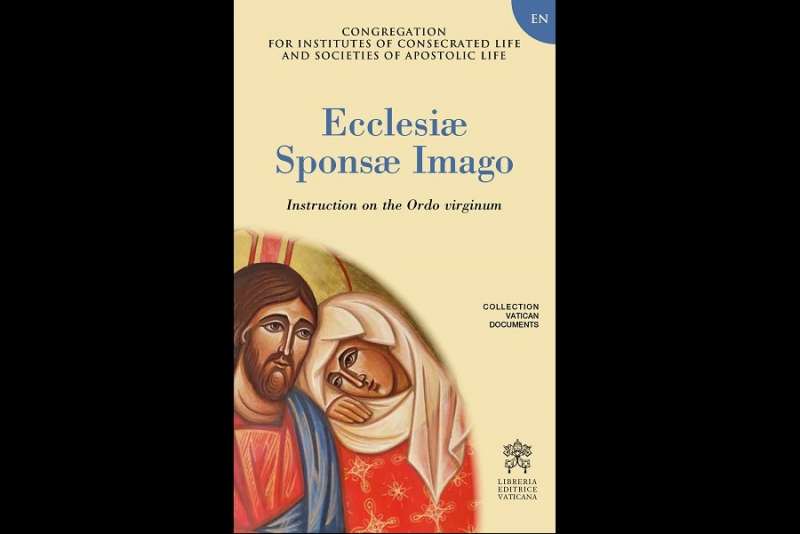Almost 50 years after the Church published the new Rite of Consecrated Virginity, the Vatican has issued an instruction on the state of life, its discipline, and the responsibilities of diocesan bishops toward the vocation of consecrated virgins.
The instruction was created in response to requests from bishops for clarity on the role and mission of consecrated virgins, especially following an increase in the number of women discerning the vocation since the revision of the Rite of Consecration, published in 1970 with the approval of Pope Paul VI.
A consecrated virgin is a never-married woman who dedicates her perpetual virginity to God and is set aside as a sacred person who belongs to Christ in the Catholic Church.
The Congregation for Institutes of Consecrated Life and Societies of Apostolic Life, which issued the instruction July 4, estimates there are now more than 5,000 consecrated virgins on all five continents “in very diverse geographic areas and cultural contexts.”
In consideration of this, the document gives explicit instructions for the prerequisites, formation, regulation, and documentation of consecrated virgins, who belong to the ecclesial “Ordo virginum” or “Order of Virgins,” and are overseen by the diocesan bishop.
“Consecrated persons dedicate themselves to prayer, penance, works of mercy and the apostolate, each according to their own charisms, welcoming the Gospel as a fundamental rule for their life,” stated Archbishop José Rodríguez Carballo, secretary of the congregation for consecrated life.
“The charism of virginity is harmonized with the proper charism of each consecrated person, giving rise to a great variety of responses to the vocation, in a creative freedom that demands a sense of responsibility and the exercise of serious spiritual discernment.”
The instruction, called Ecclesiae Sponsae Imago, gives a comprehensive history of the vocational state, which is referred to in the New Testament and by early church fathers, and was common in the first centuries before women began forming and entering religious orders.
After the practice declined with the growth of monastic religious life, consecrated virginity revived as religious orders began to preserve the “Rite of Consecration to a Life of Virginity” and as it was translated from Latin into modern languages.
The Second Vatican Council also ensured consecrated virginity’s renewal in the modern world when it called for a revised the “Rite of Consecration.”
According to the Code of Canon Law, women who pursue this vocation must be consecrated to God through the diocesan bishop, according to the rite approved by the Church. Upon consecration, they are betrothed mystically to Christ and are dedicated to the service of the Church, while remaining in a public state of life.
Consecrated virgins live individually, unless they choose to live in community with other consecrated virgins, and receive direction from the bishop. Their consecration and life of perpetual virginity is permanent. Their call to a secular state of life means they have jobs and lives like that of the average person, providing for their own needs. The local diocese is not financially responsible for consecrated virgins.
The instruction states that consecrated virgins are connected to the particular Church [diocese] in which they received formation and consecration, serving the local Church community under the authority of the bishop.
The bishop’s responsibilities include overseeing the preparation and formation before consecration and ongoing formation following.
The consecrated virgin’s relationship to the diocese “is a special bond of love and mutual belonging,” wrote Carballo.
“The consecrated person recognizes herself as the daughter of a particular Church, shares its history of holiness, and with her own gifts contributes to its edification and participates in its mission.”
“In this perspective,” he continued, “in addition to the pastoral responsibility of the diocesan bishop, it is emphasized that belonging to the Ordo virginum, although usually lived in conditions of solitude, establishes profound relationships of communion.”
The congregation recommends that if a woman has discerned the possibility of a vocation to consecrated virginity, a period of one or two years of preparation should be conducted, as set by the bishop. Following this period, formal formation can begin, which should last two or three years.
The diocesan bishop, taking into consideration advice from any delegates and from the woman’s spiritual adviser, has the final say on whether a candidate fits the requisites to become a consecrated virgin.
The bishop is also responsible for cases in which a consecrated virgin requests a permanent or temporary transfer to another diocese, for whatever reason, or a dispensation from the obligations of consecration for very serious reasons.
He also oversees dismissal from the Ordo virginum under specific grave circumstances, including issuing a decree of dismissal if warranted, which must be confirmed by the Holy See to take effect.
Even if a delegate has been named for the pastoral care of the Ordo virginum, the instruction states that “the final decision concerning acts of major importance remains the competence of the diocesan Bishop.”
It also provides strict instructions on record-keeping, in order that the number of consecrated women can be tracked more completely in the future.
The document also outlines the competency of a secretariat for the Ordo virginum within the congregation, which collects data on the numbers of consecrated virgins in the various countries and the comments in the reports bishops provide during ad limina visits to the Vatican, typically every five years.
The secretariat, if needed, may ask for assistance from consecrated women, bishops’ conferences, and bishops’ representatives.
The Holy See will also oversee cases in which a consecrated woman later decides to enter an institute of consecrated life, or a society of apostolic life.

